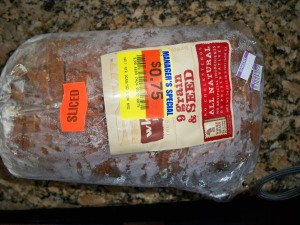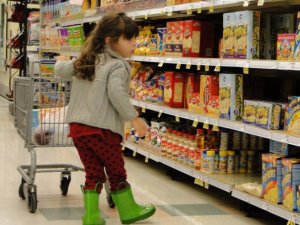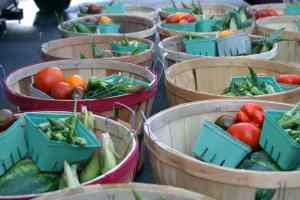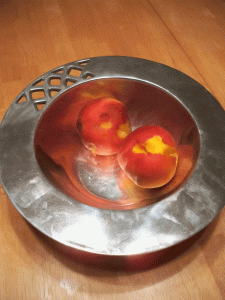I’ve written before about saving money at the grocery store by playing The Grocery Game as well as about ways to save with or without coupons. I thought I’d share a few more tips I’ve picked up since then. I must be getting pretty good because I’ve averaged 48% savings over my past four shopping trips (one per week). To quote one of my favorite original-Arkansan sayings, “I’m not braggin’. I’m just tellin’ ’cause I’m proud.”
Oops, We Baked Too Much – This rack can be found in or near the bakery in most grocery stores. In Kroger, it really is called the “Oops We Baked Too Much” rack. It is filled with bakery items that are about to go past their sell-by date. In most cases the markdowns are 50% or more. I stop here first and ferret out the good bread, cookies, etc. I freeze the bread until I need it. My picky husband did not notice that he was eating previously frozen bread until I asked him to get a loaf out of the freezer one day. Generally the bread lasts 5 days after I buy it off of this rack.
Manager’s Specials on Meat – I’ve mentioned this in a previous post, but I just recently realized that the marked down meat is all moved to one area of the refrigerator case. Makes it much easier to browse.
Clear-Out Corner – I’ve also found that most stores have a clearance corner where they throw random items in a last-ditch effort to get rid of them. High discounts can be found, but you have to dig through a jumble of dry goods, personal care, and non-food-and-drug items.
Look High and Low – In every aisle, higher priced items are placed at eye level. You’ll often find less expensive brands, off brands, and sale items placed on the lowest and highest shelves.
Ten cents off Gas at Shell – This tip is specific to Kroger card holders in Arkansas. You can now use your Kroger card to save 10 cents per gallon at all Shell gas stations in the state. You do have to have at least 100 points ($1 spent in groceries = 1 point) accumulated on your Kroger card to use this card benefit.
Store-Specific Digital Coupons – Many grocery chains are now featuring their own digital coupons on their websites. You register your store shopping card, click the coupons you want, and they are automatically loaded to your card. When you swipe your card at the register, they are automatically deducted from your total. Visit your store’s website to see if they have digital coupons, and go here for Kroger e-coupons. If you are a Target shopper and have a smart phone, you can sign up to have coupons sent directly to your phone. At the register, you bring up an image of the coupon, and the cashier scans it.
Groupon.com – Groupon is not really grocery specific, but I think it deserves mention here as a great way to save money (as long as you only buy Groupons for things you normally use). Sign up for a Groupon account, and they will email you a city-specific deal every day. You decide whether you want to buy it or not. Savings are usually 50 to 65 percent and cover a wide range of goods and services: everything from car washes to trendy clothing boutiques have been featured here in Little Rock.
And finally, a little tip for my WLR tribe members. It’s about saving time, not money. But then, time is money…
Our new Marketplace Kroger (read: sort-of-Super-Kroger) is beautiful, but slightly overwhelming. On my way out of there today, I noticed that they have store maps with a product index available. They’re on the same stand as the weekly ad. Grab one to take around with you, at least until we all learn the place. You might think you’ll look a little silly carrying a map, but you also look a little silly doing three laps through the store, spending two hours finding everything you need. (I know this from experience. I saw the sushi guys pointing and laughing at me today.)



















